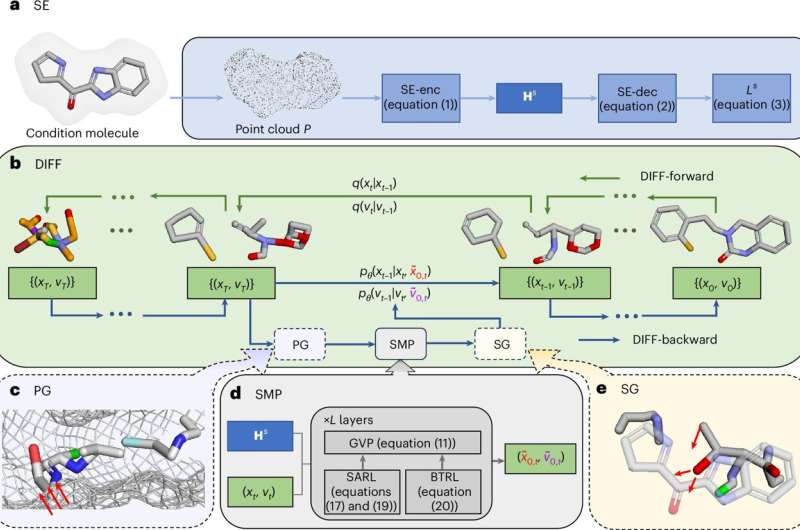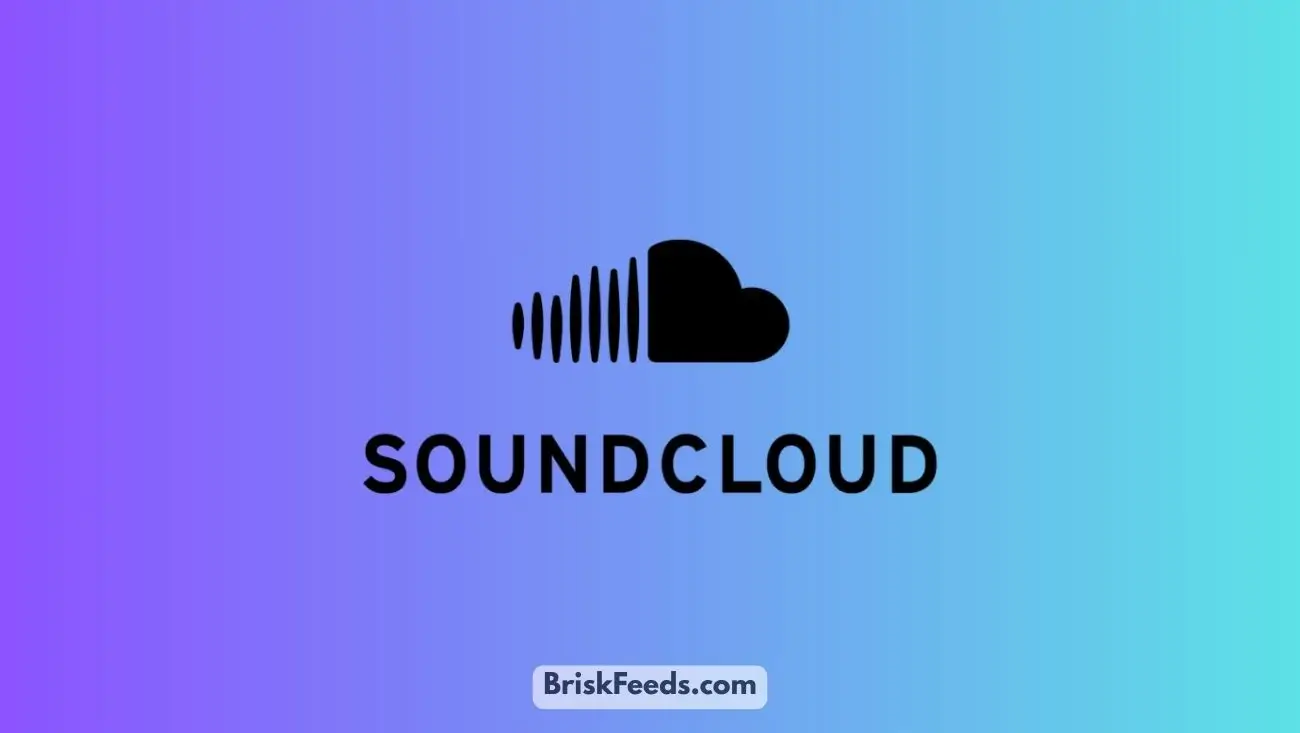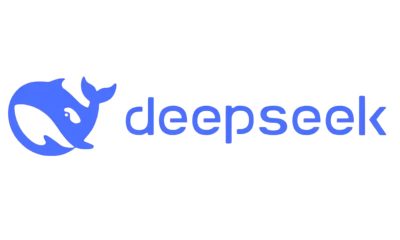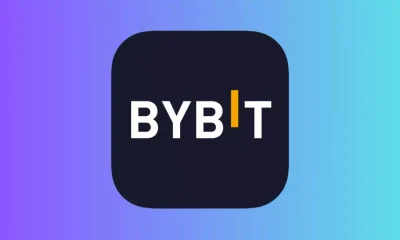AI
Generative AI Poised to Revolutionize Drug Discovery

Generative artificial intelligence (AI) is set to transform the future of drug discovery, offering new possibilities for developing treatments faster and more efficiently, as detailed in a study published in Nature Machine Intelligence. The research, conducted by a team from Stanford University and the University of Cambridge, highlights how generative AI can design novel drug candidates by predicting molecular structures with unprecedented accuracy. This advancement, while promising, also raises questions about resource demands and ethical considerations, reflecting broader trends in AI-driven creative tools and AI privacy debates.
The study, titled “Generative AI for Drug Discovery: A New Paradigm,” explores how AI models can generate and optimize drug candidates by simulating chemical interactions at a molecular level. Nature Machine Intelligence reports that these models can predict the efficacy and safety of potential drugs, reducing the time and cost associated with traditional drug development. Phys.org notes that this technology could accelerate the discovery of treatments for diseases like cancer, Alzheimer’s, and rare genetic disorders, aligning with advancements in AI communication tools that enhance data analysis capabilities.

Photo: Nature Machine Intelligence (2025). DOI: 10.1038/s42256-025-01030-w
Generative AI works by training on vast datasets of existing drugs and their properties, then generating new molecules that could potentially treat specific conditions. The Stanford-Cambridge team used deep learning algorithms to create a model that can design drugs with desired properties, such as targeting specific proteins or minimizing side effects. This approach has already shown promise in identifying candidates for clinical trials, a process that traditionally takes years. The study’s findings suggest that AI could shorten this timeline to months, a significant leap forward in medical research.
However, the integration of generative AI into drug discovery is not without challenges. The technology requires substantial computational resources, which could limit its accessibility to smaller research institutions, a concern often raised in AI accessibility efforts. Additionally, the ethical implications of AI-generated drugs must be considered, particularly regarding patent rights and the potential for bias in the training data. This aligns with discussions in cybersecurity contexts, where the responsible use of AI is crucial.
The digital divide also poses a significant hurdle. While large pharmaceutical companies may readily adopt this technology, smaller firms and developing countries may struggle to access the necessary infrastructure, potentially exacerbating disparities in healthcare innovation. This challenge is often explored in AI-driven public safety tools, where equitable access to technology is a priority.
Generative AI’s potential to revolutionize drug discovery is immense, offering hope for faster and more effective treatments. However, its success will depend on addressing these challenges and ensuring that the benefits are widely shared. As AI continues to shape the future of medicine, the balance between innovation and ethics will be critical. What do you think about generative AI’s role in drug discovery—will it transform healthcare, or does it face significant obstacles? Share your thoughts in the comments—we’d love to hear your perspective on this groundbreaking technology.
AI
Groundbreaking! Meta AI Science Unleashes Tools to Supercharge Discovery, Speeding Up Cures & New Materials

MENLO PARK, USA – Get ready for a science revolution! Meta AI Science has unveiled a treasure trove of open-source tools, including the colossal “Open Molecules 2025” dataset and advanced AI models, aimed at putting scientific discovery into overdrive. This groundbreaking release promises to empower researchers globally, potentially slashing the time it takes to find new cures for diseases, invent sustainable materials, and unlock the fundamental secrets of chemistry and physics. For everyday people in the USA, this could translate to tangible benefits sooner than ever imagined.
The core of this Meta AI Science announcement is the “Open Molecules 2025” dataset. Developed in collaboration with esteemed institutions like Lawrence Berkeley National Laboratory (Berkeley Lab) and Carnegie Mellon University, this dataset is described as record-breaking in its scale and complexity. It contains information on billions of molecular structures and their properties, offering an unprecedented resource for training AI models to predict how molecules will behave and interact. Think of it as a super-library for the building blocks of everything around us.
The Power of Meta AI Science in Real-World Applications
Why is this such a big deal? Traditional scientific research, especially in fields like drug discovery and materials science, can be incredibly time-consuming and expensive. Scientists often rely on painstaking trial-and-error experiments. The Meta AI Science tools aim to change that paradigm. By using AI to sift through vast amounts of molecular data and predict outcomes, researchers can significantly narrow down the most promising candidates for further investigation, saving years of work and millions of dollars. This acceleration could be pivotal in tackling some of humanity’s biggest challenges.
Imagine AI models trained on this Meta AI Science data helping to:
- Discover New Drugs Faster: Identifying molecules that could effectively treat diseases like cancer, Alzheimer’s, or new viral threats. The current advances in generative AI for drug discovery are already promising, and Meta’s contribution could further fuel this.
- Create Sustainable Materials: Designing novel materials for carbon capture, more efficient batteries, biodegradable plastics, or stronger, lighter composites for manufacturing.
- Advance Green Energy: Uncovering new catalysts for producing clean hydrogen fuel or improving solar cell efficiency.
Meta is not just releasing data; they are also providing open-source AI models pre-trained on this information. This means researchers don’t have to start from scratch, democratizing access to cutting-edge AI capabilities. This open approach is crucial for fostering collaboration and innovation across the global scientific community. It’s a different kind of AI impact than, say, the controversies around AI-generated fakes of celebrities like Billie Eilish, but it highlights AI’s broad reach.
The potential impact of Meta AI Science on everyday life in the USA is profound. Faster drug development could lead to quicker responses to health crises and better treatments for chronic conditions. New materials could lead to more environmentally friendly products and more efficient technologies. This initiative aligns with a broader push to harness AI for societal good, a theme also seen in discussions around AI and mental health support (though HealthBench is a different project, the underlying goal of using AI for well-being is similar).
By making these powerful resources freely available, Meta AI Science is aiming to break down barriers in scientific research. Smaller labs, universities with limited budgets, and researchers in developing countries can now tap into world-class AI tools and data. This collaborative spirit is vital for tackling global challenges that require diverse perspectives and expertise. The transparency and openness contrast with concerns sometimes raised about how other AI models are trained or deployed, such as the issues surrounding Elon Musk’s Grok AI and misinformation.
This initiative is part of Meta’s broader “Fair Science” program, which emphasizes open and responsible AI development for scientific advancement. It’s a significant contribution that could lead to a new era of accelerated discovery, where AI acts as a powerful partner to human ingenuity. The implications are vast, potentially touching everything from the medicines we take to the products we use and the environment we live in. The scale of this data release is impressive and will likely fuel countless research projects. As AI tools become more accessible, even things like AI-powered image-to-video creation are becoming common.
The journey from raw data to life-changing breakthroughs is still complex, but the Meta AI Science tools provide a powerful new starting point. Scientists will now be able to ask more ambitious questions and explore molecular possibilities at a scale previously unimaginable. This is not just about making science faster; it’s about making it smarter and more accessible to everyone dedicated to solving the world’s toughest problems.
AI
Jaw-Dropping! Netflix Ad Tier Skyrockets to 94M Users, AI Ads Coming to Your Binge Next Year

NEW YORK, USA – In a stunning announcement that has sent ripples across the streaming and advertising worlds, the Netflix ad tier has captured an incredible 94 million global monthly active users. This meteoric rise, revealed during Netflix’s recent Upfront presentation, underscores a monumental shift in how viewers are consuming content and how the streaming behemoth is diversifying its revenue streams. For audiences in the USA and worldwide, this not only means more people are opting for the budget-friendly, ad-supported subscription but also that big changes are on the horizon for how advertisements are delivered, including the introduction of cutting-edge generative AI ads.
The growth of the Netflix ad tier has been nothing short of phenomenal. To put this 94 million figure into perspective, it’s a dramatic leap from the 40 million users reported earlier this year, and an even more significant jump from the 5 million subscribers it had in May 2023. This rapid adoption indicates that consumers are increasingly comfortable with watching ads in exchange for a lower subscription price, a trend that could reshape the entire streaming landscape. Netflix stated that its ad plan now accounts for over 30% of all subscribers in the 12 countries where it is offered, and nearly 50% of all new sign-ups in these markets are choosing the ad-supported option. This rapid user adoption is a testament to the plan’s appeal, especially as household budgets feel the pinch. The evolution of streaming services often involves new features and strategies, much like how TikTok recently launched AI-powered “Alive” images-to-videos.
Explosive Growth and the Future of Ads on the Netflix Ad Tier
This immense expansion of the Netflix ad tier user base provides a fertile ground for the company to roll out its ambitious new advertising technology. Moving away from its current partnership with Microsoft for ad-serving tech, Netflix announced it is building its own in-house advertising platform. This proprietary system is expected to launch by the end of 2025 in the U.S., with a full global rollout anticipated by the second quarter of 2026. By bringing its ad tech in-house, Netflix aims to gain greater control over the ad experience, improve targeting capabilities, and offer more sophisticated tools for advertisers. This strategic move is reminiscent of how other tech giants operate, controlling their ecosystems for maximum efficiency and innovation, a theme also seen in the development of AI tools by companies like Google for its search page.
But the real headline-grabber from Netflix’s announcements is the impending arrival of generative AI-powered advertisements. Slated to launch “midway through next year” (2026), these AI ads promise to be more dynamic, potentially personalized, and seamlessly integrated into the viewing experience. While specific details on how the generative AI will function remain somewhat under wraps, the implication is that ads could be tailored in real-time or created with a level of variability and relevance not previously possible. Imagine ads that subtly change based on the show you’re watching, the time of day, or even your past viewing habits – the possibilities are both intriguing and, for some, a little unnerving. The use of AI in content personalization is a major trend, impacting everything from AI in audiobook narration and translation to more tailored news feeds.
Alongside AI ads, Netflix is also exploring other innovative ad formats. These include “title card” or “squeeze-back” ads, which would display advertising on the side of the screen while content information is shown, possibly during a pause or at the end of a show before the next episode auto-plays. Shoppable ads, allowing viewers to directly purchase products featured or advertised, and more interactive ad experiences are also on the roadmap. The goal, according to Amy Reinhard, Netflix’s President of Advertising, is to make ads more engaging and less intrusive, ultimately enhancing the value proposition of the Netflix ad tier. The push for more engaging digital experiences is widespread, with companies like Google also exploring generative AI for 3D shoppable products.
The implications of these developments are vast. For viewers, the continued growth of the Netflix ad tier means the cheaper plan is here to stay and will likely become an even more central part of Netflix’s offering. The introduction of AI ads and other novel formats could mean a more relevant, if potentially more persuasive, advertising experience. However, concerns about data privacy and the potential for “creepy” levels of personalization will undoubtedly be part of the public conversation. It’s a delicate balance Netflix will need to strike. As AI becomes more sophisticated, the ethical considerations grow, a topic that even extends to AI’s role in creative fields and copyright issues.
For advertisers, Netflix’s burgeoning ad tier audience and its new in-house ad platform represent a massive new opportunity to reach highly engaged viewers. The promise of better targeting, innovative formats, and robust measurement tools (Netflix is partnering with Nielsen, EDO, and iSpot for this) will be very attractive. The streaming giant is clearly signaling that advertising is no longer just a side project but a core pillar of its future growth strategy. This focus on advertising revenue could also influence content decisions, potentially leading to more shows designed to appeal to demographics coveted by advertisers. The success of these ad ventures could inspire other streaming services to innovate similarly, potentially leading to more AI-driven enhancements in user interfaces and content discovery, like Notion’s AI transcription features that aim to improve user experience.
As Netflix powers ahead with its ad-supported ambitions, the key will be maintaining a positive user experience. If the ads become too frequent, too intrusive, or if the AI-driven personalization crosses a line, it could alienate the very subscribers it has worked so hard to attract to the Netflix ad tier. But if done right, Netflix could set a new standard for how advertising and premium streaming content can coexist, providing a blueprint for the rest of the industry. The journey from a purely subscription-based model to one increasingly reliant on advertising is a bold one, and with 94 million users already on board the ad train, Netflix has significant momentum.
AI
Exposed! SoundCloud Scrambles After AI Policy Backlash from Artists

NEW YORK, USA – The SoundCloud AI policy recently became a flashpoint of controversy, igniting fears among musicians that their creative work could be fed into artificial intelligence models without their permission or compensation. Initial updates to SoundCloud’s terms of service were interpreted by many artists as a green light for the platform to utilize their uploaded tracks for AI training, leading to a swift and vocal backlash across social media and music forums. This uproar underscores the growing tension between AI development and artist rights, a critical issue for creators in the USA and globally.
The initial SoundCloud AI policy changes caused widespread alarm. Artists, already wary of AI’s potential to devalue human creativity, saw this as another instance of a major platform potentially exploiting their work. The concern was that their unique sounds and compositions could be used to train AI systems that might eventually generate music to compete with them. This mirrors broader anxieties in creative industries, like the controversy over AI-generated fake images of Billie Eilish.
Responding to the outcry, SoundCloud CEO Eliah Seton issued a statement seeking to reassure the artist community. He emphasized that the company’s vision for AI is one that “should support artists, not replace them.” Seton acknowledged the “confusion” and “concern” caused by the updated terms and stated that SoundCloud is “committed to protecting the rights of creators.” This public clarification signals a pivot, or at least a significant refinement, of the initial SoundCloud AI policy communication. The rapid response highlights how sensitive the topic of AI and copyright has become, similar to stars urging for stronger AI copyright protections.
SoundCloud Backtracks: What Does It Mean for Artists?
Following the backlash, SoundCloud reportedly “fixed” or further “clarified” its terms. The core message now is that the platform will not train AI models on creators’ music without their explicit permission. This is a crucial distinction and a win for artists who demanded more control. The platform also indicated it is working on tools that will give creators more say in how their content is used in the context of AI.
Key takeaways from SoundCloud’s revised stance on its SoundCloud AI policy include:
- Consent is Key: Explicit permission will be sought before using music for AI training.
- Artist Empowerment: The stated goal is to use AI to benefit artists, potentially through new creative tools or monetization opportunities.
- Ongoing Dialogue: The company seems to acknowledge the need for continued engagement with artists on AI-related issues.
This situation serves as a potent reminder for tech platforms about the importance of clear communication and respect for creator rights when implementing policies related to AI. The power of collective artist action was also evident in forcing this clarification. As AI continues to reshape industries, the debate over fair use, compensation, and control will only intensify. Tech companies are increasingly under pressure to be transparent, as seen with OpenAI’s recent move to publish AI safety test results.
The SoundCloud AI policy saga is likely not over. Artists will be watching closely to see how the platform implements its promises and what specific tools for AI control are rolled out. For now, the immediate crisis seems to have been averted by SoundCloud’s quick response to the community’s legitimate concerns. This incident adds to the growing list of ethical considerations surrounding AI development, including issues of misinformation generated by AI chatbots.
-

 AI3 months ago
AI3 months agoDeepSeek AI Faces U.S. Government Ban Over National Security Concerns
-

 Technology2 months ago
Technology2 months agoiPhone 17 Air and Pro Mockups Hint at Ultra-Thin Future, Per Leaked Apple Docs
-

 AI2 months ago
AI2 months agoGoogle Gemini Now Available on iPhone Lock Screens – A Game Changer for AI Assistants
-

 Technology3 months ago
Technology3 months agoBybit Suffers Record-Breaking $1.5 Billion Crypto Hack, Shaking Industry Confidence
-

 Technology3 months ago
Technology3 months agoPokémon Day 2025 Celebrations Set for February 27 With Special Pokémon Presents Livestream
-

 AI2 months ago
AI2 months agoOpera Introduces AI-Powered Agentic Browsing – A New Era for Web Navigation
-

 Technology2 months ago
Technology2 months agoApple Unveils New iPad Air with M3 Chip and Enhanced Magic Keyboard
-

 AI2 months ago
AI2 months agoChina’s Manus AI Challenges OpenAI with Advanced Capabilities
